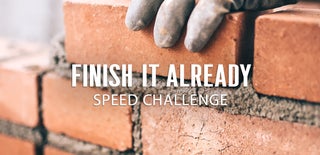Introduction: How to Make the NeoVulcan Paper Airplane
Very fast with long range and yet still simple, the NeoVulcan is a development of the MetaVulcan with improvements to make construction easier.
-----------------------------------------------------------
Background:
The NeoVulcan was an aircraft that was developed passively--not actively. After I published my 2014 tutorial for the MetaVulcan, I simply started building my MetaVulcans in a slightly different manner than I had before. I forgot the documented process and applied new techniques to the MetaVulcan, thinking them to have been standard anyway. The "new" MetaVulcans were simpler, better performers that featured aerodynamic refinements whilst eliminating the need for a pencil and ruler to be used too.
I constructed the improved MetaVulcans for many years before YouTube's Foldable Flight collaborated with myself in mid-2019 to post a tutorial for the MetaVulcan. It was only after seeing his video did I realize the posted instructions were different from what I'd personally been working to by that point. Comparing the original design to the new standards, I found the latter to be superior and so I decided to publish a new tutorial--as a new decade neared, a new Vulcan variant to meet it seemed fitting.
For a variety of reasons (including simply lacking a name for the new design at the time), I sat on the NeoVulcan project for a long while before publication.
------------------------------------------------------------
This tutorial is an entry in the "Finish It Already!Speed Challenge" which asks that the story of the project be told, hence the background story above. Explaining the backstories of my aircraft as I did above is par for the course for me, but I figured I'd point the contest out anyway.
----------------------------------------------------------
TAA USAF Designation: F292-29
Step 1: Materials
Required:
1 Piece of 8.5 by 11 inch paper
Tape
Optional:
Pencil
Scissors
Ruler
Step 2: Length, Fourth and Airfoil Folding
Fold the paper in half along its length. (Photographs 1 to 2) Once this is done, pull both of the lengthwise edges of the paper into the center crease you just made. (Photographs 3 to 4) Once you have made these on both sides, refold the center crease to make all creases the same direction. (Photographs 5 to 7)
With the creases of the paper all folded in toward one another, pull the corners of paper down as shown. (Photographs 8 to 9)
Step 3: Leading Edge Folding
Fold the outer edges of the paper into the creases as shown on each side. (Photographs 1 to 3) Once this is done, fold back the corners of this folded bit leading edge. (Photographs 4 to 5)
Unfold the paper and then reverse the corner folds you've made; after the reversal, pull the new crease itself into the creases you made at the beginning of this step. Once this is done, fold along the initial creases on both sides. Once this is done, the paper should appear as it does in the last photograph.
Step 4: Canard and Nose Folding
To make the canards, pull the overhanging paper back away from the center crease as shown. Repeat on the other side. (Photographs 1 to 4) Pull the tip of the nose back until its tips meet the apex of the diamond and crease. (Photographs 5 to 7) Once this is done, pull the tip forward again until the forward edge underneath is just visible. After this is done, tuck the edges of the paper underneath the other layers as shown.
Pull the (now) blunt edge of the nose down to the trailing edge as shown. (Photographs 9 to 10) Proceed to then pull the nose back forward until the airfoils' leading edges sit above their own trailing edges and crease. (Photograph 11) Once you've made the crease, unfold the paper before folding the corners of the paper in to this new crease. (Photographs 12 to 13)
With this done, pull the nose forward again. (Photograph 14)
Step 5: Canard, Wing and Winglet Folding
Keep the airplane folded in half along its center crease to begin. (Photograph 1)
Fold down the canards whilst keeping their leading edges aligned with the nose to maintain an angle of incidence of zero degrees. (Photographs 2 to 3) Following this, fold down the wings at the fourth folds you made previously. Align the trailing edges of the wings with that of the fuselage to keep the angle of incidence at zero degrees. (Photographs 4 to 6) After this is finished, fold the wingtips down to the fourth folds. (Photographs 7 to 9)
Step 6: Taping
Apply tape where designated in the order listed. When this is done, the airplane is completed.
Step 7: Flight
The NeoVulcan is a hybrid paper airplane with a mixture of dart and glider flight characteristics. Based on the NeoVulcan's configuration and handling, people used to throwing dart paper airplanes should be able to work with the NeoVulcan readily, with those used to slower airplanes able to learn quickly as well.
Launches should be done at neutral or positive attitude at moderate to high speed. Additional applicable surfaces include flaps, elevators, ailerons, flaperons, elevons, rudders, air brakes, canard trim and an "electronic warfare" tail.
Enjoy!

Participated in the
Finish It Already Speed Challenge











